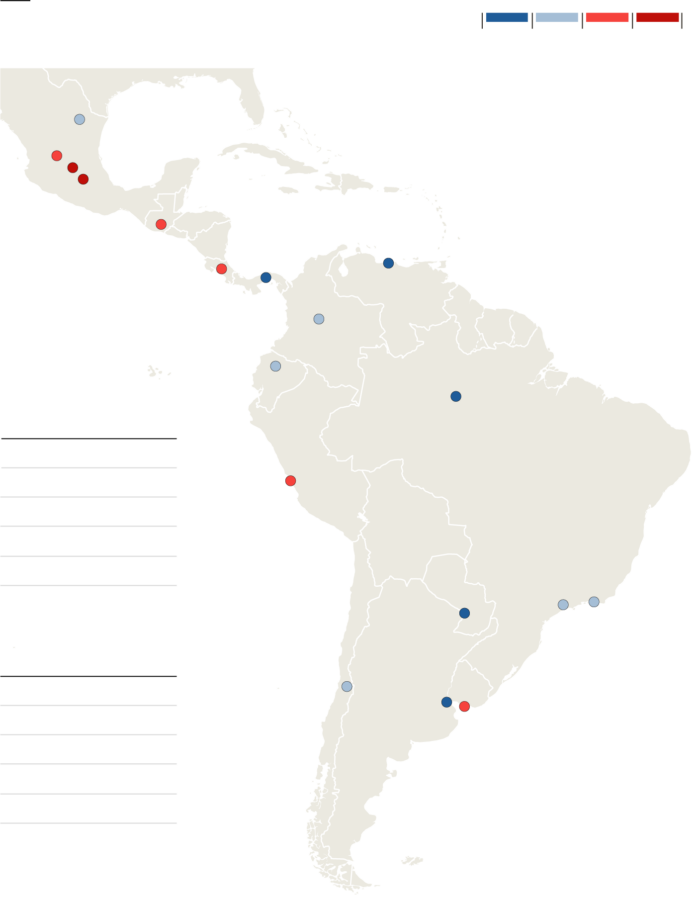TWO REGIONS stood out in this year’s Worldwide Cost of Living survey by EIU, our sister company. Europe had some of the most expensive cities in the world: Zurich came joint first with Singapore, and western European cities occupied ten of the top 20 spots. But the biggest climbers of any region were cities in Latin America. Our map below shows which have become the most expensive.
Latin America & the Caribbean, cost-of-living index. 1000 New York, USA
Mexico City
Querétaro City
Montevideo
San José
Lima
Buenos Aires
Asunción
Manaus
Panama City
Caracas
The average ranking of Latin American cities increased by 13 spots in 2023. Mexico City, which was 76th two years ago, now ranks 16th—above Milan, Munich and Washington, DC. Other Mexican cities also climbed significantly: Monterrey, Aguascalientes and Querétaro City went up by 20, 39 and 48 spots, respectively. The region’s other most expensive cities were Montevideo, the capital of Uruguay; San José, the capital of Costa Rica; and Lima, the capital of Peru.
What accounts for the jumps? The main factor is that EIU’s index measures the cost for foreigners rather than for locals (it was mainly designed to calculate compensation packages for expats and business travellers). In 2022 the region’s central banks acted decisively to lower inflation, which made currencies appreciate. As the index is benchmarked to the American dollar, exchange rates can have a big impact on the ranking.
The Mexican peso, for instance, increased by 15% against the dollar this year. The currency in Costa Rica, one of the few countries to experience deflation, also increased, which pushed its cities up the ranking despite the drop in prices.
Inflation in some parts of Latin America has not been controlled: annualised inflation remains higher than 160% in Argentina and more than 280% in Venezuela. But these are exceptions. In much of the rest of Latin America inflation rates have dropped to single digits. That is a relief for locals, even if prices are higher for travellers with dollars.
Source: The Economists






